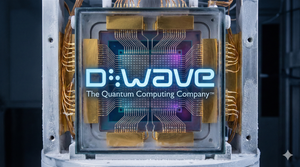Vancouver, British Columbia--(Newsfile Corp. - February 20, 2025) - Nicola Mining Inc. (TSX: NIM) (OTCQB: HUSIF) (FSE: HLIA) (the "Company" or "Nicola") has completed drilling (totaling 4874m and 14 holes; Table 1) and is pleased to provide updates on its highly successful 2024 Drilling Exploration Program (the "2024 Program")1 at its New Craigmont Copper Project, near Merritt, BC. Intervals of significant copper mineralization are presented in Table 2.
Table 1. 2024 Drill Holes*
| Hole ID | Easting | Northing | Elevation (m) | Azimuth (°) | Dip (°) | End of Hole (m) |
| WP-24-001 | 642289 | 5565271 | 1362 | 0 | -75 | 377.93 |
| WP-24-002 | 642289 | 5565271 | 1362 | 270 | -45 | 207.25 |
| WP-24-003 | 642256 | 5564903 | 1377 | 355 | -45 | 658.00 |
| WP-24-004 | 642268 | 5564904 | 1378 | 110 | -45 | 211.22 |
| WP-24-004A | 642268 | 5564904 | 1378 | 110 | -45 | 374.89 |
| MB-24-001 | 644977 | 5565105 | 1437 | 35 | -55 | 402.43 |
| MB-24-002 | 644977 | 5565105 | 1437 | 325 | -55 | 252.98 |
| MB-24-003 | 645113 | 5565129 | 1460 | 210 | -60 | 323.07 |
| MB-24-004 | 645113 | 5565129 | 1460 | 35 | -60 | 276.76 |
| MB-24-005 | 645848 | 5564858 | 1529 | 180 | -60 | 399.29 |
| MB-24-006 | 645113 | 5565129 | 1460 | 265 | -67 | 119.01 |
| MB-24-006A | 645113 | 5565129 | 1460 | 265 | -67 | 121.92 |
| NC-24-001 | 646680 | 5564179 | 934 | 205 | -60 | 594.36 |
| NC-24-002 | 646680 | 5564179 | 934 | 185 | -58 | 554.71 |
*Collar coordinates approximate based on handheld GPS (NAD83, Zone 10), and will be professionally surveyed in 2025 when the snow melts.
Table 2. Significant Drill Hole Intervals
| Hole ID | Interval (m) | Grade | From (m) | To (m) |
| MB-24-001 | 40.5 | 0.10% Cu | 52.5m | 93.0m |
| Includes: 9.48m @ 0.34% Cu | ||||
| MB-24-004 | 28.3 | 0.11% Cu | 18.3m | 46.7m |
| Includes: 10.86m @ 0.23% Cu | ||||
| NC-24-001 | 56.6 | 0.17% Cu | 313.7m | 370.3m |
| Includes: 33.8m @ 0.23% Cu | ||||
| 75.0 | 0.36% Cu | 404.0m | 479.0m | |
| Includes: 10m @ 0.97% Cu and Includes: 12m @ 0.85% Cu and | ||||
| NC-24-002 | 52.9m | 1.03% | 344.1m | 397.0m |
| Includes: 13.0m @ 3.46% Cu | ||||
Note: Detailed results on Company website.
New Craigmont Copper Project 2024 Exploration
The first phase of the 2024 Program at the never-before-drilled West Craigmont-WP target totaled ~1829.70m (5 holes, 1 of which was a twin/redrill, Fig. 1) with initial findings reported in the August 30, 2024 Operations and Exploration Update. Observations suggest a porphyry system; however, additional geological analysis and drilling will be required to establish potential in the area.
Figure 1. Collar locations of 2024 drilling Program at the New Craigmont Project.
To view an enhanced version of this graphic, please visit:
https://images.newsfilecorp.com/files/4873/241567_0e769922d46fe850_001full.jpg
Upon completion of the first phase, drilling commenced at the unexplored MARB-CAS Zones. Drilling is aimed to understand geology and assess mineralization potential beneath two mineralized outcrops, one at the MARB Zone and another at the CAS Zone.
Mineralization directly below the MARB outcrop is composed of chalcopyrite, pyrite, and pyrrhotite, which occurs as fine disseminations and narrow veins distributed within both intrusive and volcanic rock units. During the 2024 Program, six drill holes (MB-24-001, MB-24-002, MB-24-003, MB-24-004, MB-24-006 and MB-24-006A; Fig. 1) totaling 1500m were drilled in the vicinity of the MARB outcrop to explore near-surface mineralization and to develop deeper mineralization targets. Below is a summary of each hole:
Drill Hole MB-24-001: Drilled from a pad southwest of the MARB outcrop (Fig. 2) to test for near-surface mineralization below the MARB outcrop. The hole intersected encouraging chalcopyrite-pyrite mineralization in near vertical narrow veins from about 52.5m to 93.0m, returning an average of 0.10% Cu over 40.5m (Table 2). Mineralization is hosted in basaltic andesite with minor diorite and white felsic dykes (Fig. 3a and 3b) and includes a 9.48m interval of 0.34% Cu, from 52.52m to 62.00m (Fig. 2; Table 2).
Drill Hole MB-24-002: Drilled from the same pad as MB-24-001, towards the northwest, MB-24-002 intersected similar (but weaker) mineralization of narrow chalcopyrite-pyrite veinlets within the first 100 metres (Fig. 3c).
Drill Hole MB-24-003: Positioned approximately 150 metres east of the MARB outcrop and drilled to the south-southwest, this hole encountered weak, intermittent mineralization within the first 100 metres hosted in basaltic andesite with chalcopyrite in narrow sulphide veins (Fig. 3d).
Drill Hole MB-24-004: Drilled from the same pad as MB-24-003 but to the northeast (Fig. 2), this hole intersected discontinuous chalcopyrite mineralization from 18.34m to 46.66m returning an average of 0.11% Cu over 28.32m (Table 2) in veinlets and brecciated zones with epidote and chlorite alteration and includes a 10.86m interval of 0.23% Cu.
Drill Holes MB-24-006 and MB-24-006A: These holes, drilled from the same pad as MB-24-003 and MB-24-004, targeted the mineralization beneath the MARB outcrop but both were lost at about 120 metres depth due to a clay-filled fault. Shallow sections were weakly mineralized basaltic andesite with chalcopyrite and pyrite occurring as veins or disseminations associated with epidote and chlorite.
Figure 2. Cross section of 2024 drilling Program at MARB.
To view an enhanced version of this graphic, please visit:
https://images.newsfilecorp.com/files/4873/241567_figure2.jpg
The CAS mineralized outcrop features pyrite and chalcopyrite mineralization associated with garnet-epidote-magnetite-actinolite skarn. This outcrop is the Guichon Creek Batholith and is situated just north of the contact between the batholith and Nicola Group rocks. Drill Hole MB-24-005 was the only hole drilled in 2024 to test the mineralization potential around the CAS mineral showing.
Drill Hole MB-24-005: Positioned on a pad 35 metres north of the CAS outcrop, MB-24-005 was designed to explore the rocks directly beneath the CAS outcrop. At a shallow depth of 15 metres, the hole intersected narrow veinlets of chalcopyrite along with phyllic alteration halos hosted by Border Phase Diorite (Fig. 3e). Between 75.6 and 210.5 metres, the hole encountered intermittent epidote-magnetite-diopside-actinolite skarn where sulphide minerals (pyrite and chalcopyrite) were observed replacing magnetite (Fig. 3f). The protolith of the skarn encountered in this hole is interpreted as either diorite or basaltic andesite.
Figure 3. Representative core samples from 2024 drilling campaign at MARB and CAS: a. semi-massive chalcopyrite mineralization hosted by basaltic andesite from MB-24-001; b. veinlets of chalcopyrite from hole MB-24-001; c. mineralization of chalcopyrite occurring along the contact between basaltic andesite and a felsic dyke from MB-24-002; d. chalcopyrite veinlets hosted by basaltic andesite from MB-24-003; e. chalcopyrite veinlets along with phyllic alteration hosted by Border Phase Diorite from MB-24-005; and f. chalcopyrite replacing magnetite within epidote-magnetite-actinolite skarn from MB-24-005.
To view an enhanced version of this graphic, please visit:
https://images.newsfilecorp.com/files/4873/241567_0e769922d46fe850_006full.jpg
The holes completed at MARB-CAS have improved our understanding of the distribution of mineralization and alteration and will contribute to targeting of subsequent drill holes.
Nicola recently completed two holes (NC-24-001 and NC-24-002, Fig. 4), at the Embayment Zone. Results both extend and better define the Embayment Zone. Examples of mineralized cores are presented in Figure 5.
NC-24-001 was drilled to test the westward extension of the high-grade copper skarn in the Embayment Zone. This drill hole encountered notable skarn-hosted copper mineralization across two intervals: 56.6 meters 0.17% Cu of (313.68m to 370.30m) and 75.0 metres of 0.36% Cu (404.00m to 479.00m) see Table 2. Within these mineralized zones, particularly high-grade copper mineralization was identified in three key intervals including 33.8m of 0.23% Cu, 10.0m of 0.97% Cu and 12m of 0.85% Cu.
NC-24-002: Drilled as an infill hole between two existing drill holes (NC-18-001 and DDH-THU-002), with approximately 20-metre spacing at the target level. This hole also aimed to test the mineralization's depth extension along the dip. This drill hole intersected significant skarn-hosted copper mineralization between 344.10m and 397.00m grading 1.03% Cu over the 52.90m interval (Table 2). Included in this interval is 13m of 3.46% Cu.
Figure 4. Cross section (200m thick) showing NC-24-001 and NC-24-002 (with older and historic holes) intersecting the Embayment Zone.
To view an enhanced version of this graphic, please visit:
https://images.newsfilecorp.com/files/4873/241567_figure4.jpg
Figure 5. Examples of intense chalcopyrite mineralization encountered in 2024 Embayment Zone drill holes: a. NC-24-001: 412.63m; b. NC-24-001: 431.20m; c. NC-24-002: 360.15m; and d. NC-24-002: 367.75m.
To view an enhanced version of this graphic, please visit:
https://images.newsfilecorp.com/files/4873/241567_figure5.jpg
Peter Espig, CEO of Nicola Mining Inc., commented, "The 2024 Program has been the most successful exploration program conducted at the Craigmont Project since the 1960's. We are extremely excited about the significant copper findings in the MARB / CAS Zones, which have never seen copper-focused exploration since the early 1960s. Our goal was to drill shallow holes to confirm the existence of copper mineralization prior to drilling deeper targets; this has been accomplished. The findings of near surface chalcopyrite and the existence of faults and dykes within Guichon host rock, not only provides an ideal environment, but also reinforces that Craigmont mineralization is associated with a much larger copper system and indifferent to host rock. In addition, exploration near the Embayment Zone, expanded the Zone and provided high-grade long-interval intercepts."
Conclusions and Recommendation for 2025 Drilling:
The MARB-CAS portion of the 2024 Program successfully intersected near surface mineralization beneath the MARB outcrop, leaving it open at depth and to the west for future drilling. Figure 2 illustrates a proposed hole (in turquoise) for a follow-up program to be conducted in 2025. A drill hole collared southwest of the MARB outcrop and angled to the northeast will target deeper mineralization beneath the MB-24-001 2024 intercept. Another proposed hole will test for mineralization extending to the southwest. The dashed turquoise line in Figure 2 marks the trace of holes MB-24-006/6A, which were lost. Re-drilling these holes in 2025 is an option to test for mineralization along strike from the CAS outcrop.
Skarn discovered at CAS in the 2024 Program has an identical mineral assemblage to that of the Embayment Zone, suggesting it may be continuation of the Embayment Zone skarn, potentially displaced northward by a dextral fault (Fig. 6). MB-24-005 deviated out of the skarn, crossing a fault and into unmineralized diorite to the west. For 2025, proposed drilling includes a hole from the same pad as MB-24-005, aimed southeast, toward the Nicola side of the lithology contact. This hole targets exoskarn within the Nicola Group rocks, tracing it deeper and to the east towards the Embayment Zone (Fig. 6).
The WP showing (Fig. 1) is a historic trench with significant malachite and chalcopyrite mineralization, which remains a high-priority drilling target. Given its mineralization potential, drilling towards the WP showing should be included in the 2025 drilling campaign. As the mineralized fault within the historic trench is steeply dipping and north striking, it is recommended to drill from east to west.
Figure 6. Proposed drill hole near the CAS mineral showing targeting the exoskarn within the Nicola Group Rocks.
To view an enhanced version of this graphic, please visit:
https://images.newsfilecorp.com/files/4873/241567_0e769922d46fe850_026full.jpg
Quality Assurance and Quality Control (QA/QC)
Nicola maintains tight sample security, and quality assurance and quality control (QA/QC) for all aspects of its exploration Program. Geological work, and sample selection and preparation for transport was supervised by Nicola's Senior Geologist Kairan Liu (P. Geo.) and VP Exploration William Whitty (P. Geo.), who were on site the entire Program. All NQ and HQ-sized core samples from 2024 were logged, photographed and sampled on site by staff or consulting geologists and geotechnicians. Sample sizes ranged from approximately 0.5m - 2m in length depending on geological features. Core was sawed in half lengthwise, with one half going into a poly sample bags, and the other half going back into the box to be stored on site. Sample identification tags with unique sample numbers were placed in each bag, and bags were zip-tied closed. There were no markings on the bag or tag identify the location of the sample. The samples were packed into rice bags and transported from site by Nicola staff or contractors to Activation Laboratories Ltd.'s (Actlabs) ISO 17015 accredited lab in Kamloops, BC for preparation (crushing and pulverizing) and analyzed for 38-element ICP-OES by aqua regia (partial) digestion with specified limits (method code 1E3). Company protocols include the insertion of quality control (QC) samples consisting of Certified Reference Materials (CRMs), blanks and duplicates into the sample stream at a rate of 1 of each control sample for every 20 regular samples.
Qualified Person
William Whitty, P. Geo., the Company's VP Exploration, is the Qualified Person as defined by National Instrument 43-101 - Standards of Disclosure for Mineral Projects and supervised the preparation of, and has reviewed and approved the technical information in this release.
About Nicola Mining
Nicola Mining Inc. is a junior mining company listed on the TSX-V Exchange and Frankfurt Exchange that maintains a 100% owned mill and tailings facility, located near Merritt, British Columbia. It has signed Mining and Milling Profit Share Agreements with high-grade BC-based gold projects. Nicola's fully permitted mill can process both gold and silver mill feed via gravity and flotation processes.
The Company owns 100% of the New Craigmont Project, a property that hosts historic high-grade copper mineralization and covers an area of over 10,800 hectares along the southern end of the Guichon Batholith and is adjacent to Highland Valley Copper, Canada's largest copper mine. The Company also owns 100% of the Treasure Mountain Property, which includes 30 mineral claims and a mineral lease, spanning an area exceeding 2,200 hectares.
On behalf of the Board of Directors
"Peter Espig"
Peter Espig
CEO & Director
For additional information
Contact: Peter Espig
Phone: (778) 385-1213
Email: info@nicolamining.com
URL: www.nicolamining.com
Neither the TSX Venture Exchange nor its Regulation Services Provider (as that term is defined in the policies of the TSX Venture Exchange) accepts responsibility for the adequacy or accuracy of this release.
1 Company announced 2024 Exploration Program in a July 3, 2024, news release.

To view the source version of this press release, please visit https://www.newsfilecorp.com/release/241567











